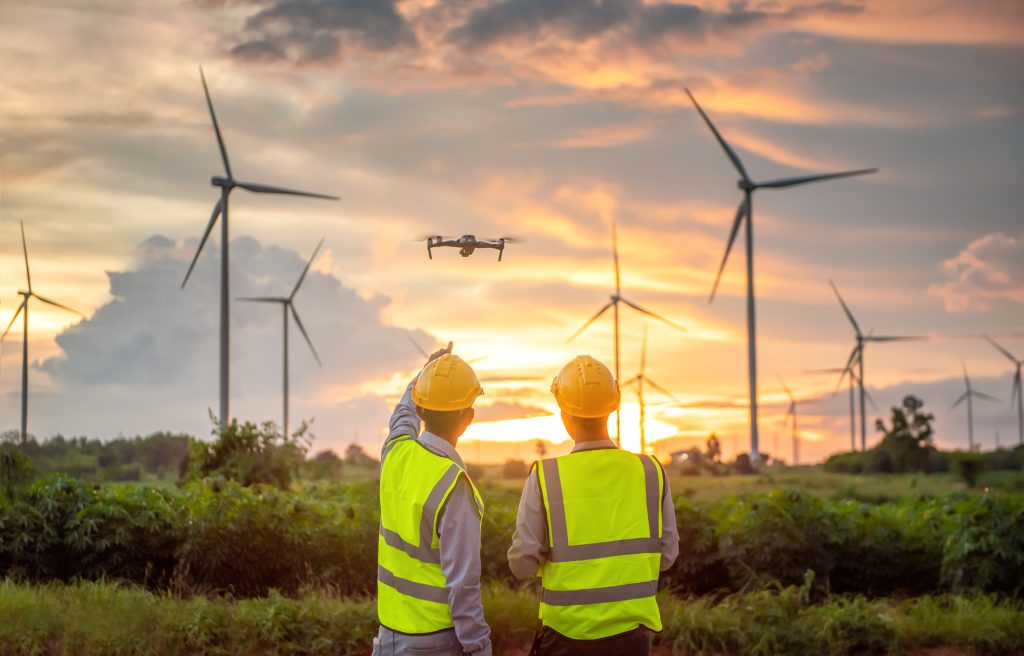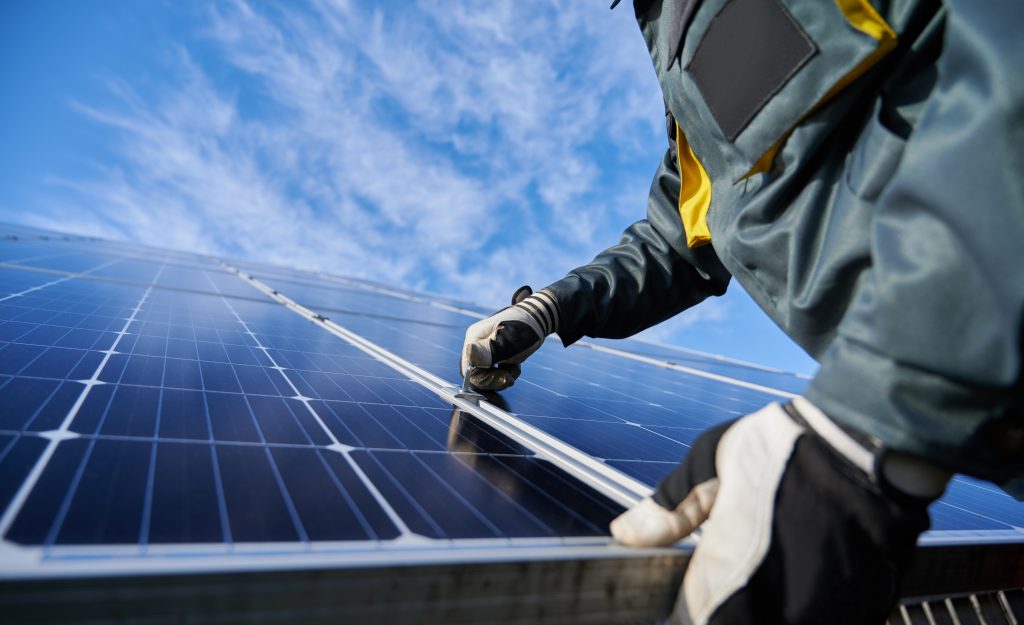Energy is the driving force behind the systems and technologies that ensure the seamless operation of the world. Without it, life as we know it would come to a halt, as there would be no light to guide us, no heat to warm our dwellings, and no technology to connect us. However, there are energy sources that can harm the environment. Over time, people learned to protect the earth by shifting to clean, renewable energy sources. So, what exactly are the different types of renewable energy sources?
In this article, we’ll explain what you need to know about clean renewable and non-renewable sources.
What is Renewable Energy?
Renewable energy comes from non-depletable sources that will persist beyond our lifetimes. These energy sources replenish naturally, but the flow is limited. Producing renewable energy produces a lot fewer emissions compared to burning fossil fuels. This makes it a better energy alternative that will not harm the environment further. In addition, shifting to renewable energy is the key to solving the climate catastrophe.
In most nations today, renewable energy sources are more affordable than fossil fuels and provide three times as many jobs.
Different types of renewable energy sources
• Solar energy
The greatest resource that is readily available is solar energy, which may be used even on overcast days. There are almost 10,000 times more sun rays that reach Earth than people are now consuming.
Solar technology offers numerous options, including fuel generation, power, natural lighting, heating, and cooling. Devices use solar radiation-focusing mirrors or photovoltaic panels to transform sunlight into electrical energy.
Although the availability of solar energy differs by location, every nation has the opportunity to add a sizable amount of solar energy to its energy mix.
Solar energy is now accessible and frequently the least expensive source of electricity due to a huge decrease in production costs over the last ten years. Solar panels have a 30-year lifespan, and the colors they are made of vary depending on the materials utilized to make them.
• Wind energy
Wind energy uses massive wind turbines, which can be built offshore or on land, to harness the kinetic energy of moving air. Although wind energy has been used for thousands of years, more recent technological developments have allowed for taller turbines and greater rotor diameters, increasing the amount of electricity produced.
Although wind speeds differ depending on the region, wind energy has significantly more potential worldwide than is now used for electricity. Most regions have enough wind resources to enable substantial development of wind energy.
Even though powerful winds exist everywhere, isolated spots are frequently the best places to produce wind energy. Offshore wind power, particularly, holds great promise.

• Geothermal energy
Geothermal energy is a type of renewable energy source that uses heat retained in the Earth’s interior. Wells or other extraction techniques remove this heat from geothermal reserves.
Hydrothermal reservoirs are naturally hot and permeable reservoirs; enhanced geothermal systems are those that need hydraulic stimulation to be practical.
After being brought to the surface, geothermal fluids at different temperatures can be used to produce power. The technology for generating power from hydrothermal reservoirs is well-established, with more than a century of experience.
Despite its advantages, geothermal energy is limited by geographic availability and the high upfront costs associated with drilling and plant construction. Nonetheless, it remains a valuable and sustainable energy source, particularly in regions with abundant geothermal resources.
• Hydroelectric energy
Producing hydropower from rivers or reservoirs involves capturing the energy of water as it flows from higher to lower elevations. Reservoir hydropower plants use stored water, while run-of-river hydropower plants tap into the force of a river’s natural flow. Water purification, transportation, farming, managing water levels (both wet and dry), and power generation are just a few of the many common uses for hydropower reservoirs.
At present, hydropower is the most significant renewable energy source in the electricity field. It depends on rainfall patterns that are generally consistent and can be adversely affected by climate-induced droughts or changes to ecosystems that affect rainfall patterns.
However, the infrastructure required for hydropower generation has the potential to harm ecosystems. Small-scale hydropower is often seen as a more environmentally friendly option, especially in remote areas.
• Ocean energy
Ocean energy encompasses several forms of renewable energy derived from the movement and thermal properties of seawater. Two major types are tidal energy and wave energy, both of which use water’s kinetic energy to generate electricity.
Tidal energy is produced by capturing the energy from the rise and fall of tides using underwater turbines or barrages. Wave energy, on the other hand, is generated by the movement of surface waves, which can be converted into electricity using various technologies, such as oscillating water columns or point absorbers.
Ocean energy has immense potential, particularly for coastal regions, and is a consistent and predictable power source. However, the development of ocean energy technologies is still in its early stages, and challenges such as high costs, environmental impact, and technical difficulties need to be addressed before they can be widely adopted.
• Biomass energy
Biomass energy is produced by converting organic materials, such as plant matter, agricultural waste, and wood, into electricity, heat, or biofuels. Biomass can be burned directly for heat or processed into biofuels like ethanol and biodiesel, which can be used in transportation.
Biomass is a versatile and renewable energy source that can help reduce waste and greenhouse gas emissions. However, its sustainability depends on responsible sourcing and management practices. Overharvesting or using land for energy crops instead of food production can lead to environmental and economic issues, such as deforestation and competition for land and water resources.
Despite these challenges, biomass energy remains an important component of the renewable energy mix, particularly in regions with abundant agricultural or forestry resources.
What is non-renewable energy?
Non-renewable energy refers to finite energy sources that cannot be replenished on a human timescale. These sources include fossil fuels like coal, oil, and natural gas, which have been the primary drivers of industrialization and economic growth for over a century. However, the extraction and combustion of non-renewable energy sources have significant environmental consequences, including air pollution, greenhouse gas emissions, and habitat destruction.
Various types of clean non-renewable energy sources
• Liquefied Natural Gas
Liquefied Natural Gas (LNG) is natural gas that has been cooled to a liquid state for easy storage and transportation. While natural gas is a fossil fuel, it is considered a cleaner alternative to coal and oil because it produces fewer carbon emissions when burned.
LNG can be used in power generation, heating, and transportation, offering a flexible and relatively low-carbon energy solution. However, natural gas extraction, processing, and transportation still contribute to greenhouse gas emissions, and reliance on a finite resource poses long-term sustainability challenges. The development of carbon capture and storage (CCS) technologies can mitigate some of these impacts, making LNG a more viable option for transitioning to a low-carbon economy.
• Nuclear Energy
Nuclear energy is produced through nuclear fission, a process in which the nucleus of an atom is split to release a large amount of energy. This energy is used to generate electricity in nuclear power plants, which produce no direct carbon emissions.
Nuclear energy is considered a clean energy source because it does not contribute to air pollution or greenhouse gas emissions. It also has the potential to provide a stable and reliable power source, particularly in regions with limited access to renewable resources. However, nuclear energy comes with significant challenges, including the risk of accidents, the disposal of radioactive waste, and concerns about nuclear proliferation.
Despite these challenges, nuclear energy remains a vital component of the global energy mix, particularly in countries seeking to reduce their reliance on fossil fuels and lower carbon emissions.
What is the difference between renewable and non-renewable energy?
The primary difference between renewable and non-renewable energy sources is their availability and environmental impact. Different types of renewable energy sources, like solar, wind, and hydroelectric power, are naturally replenished and have minimal ecological impact. They are sustainable and can be harnessed indefinitely without depleting the Earth’s resources.
On the other hand, non-renewable energy sources are finite and will eventually run out. Their extraction and use have significant environmental consequences, including air pollution, greenhouse gas emissions, and habitat destruction. While some non-renewable energy sources, like nuclear energy and LNG, are considered cleaner alternatives to traditional fossil fuels, they still pose challenges regarding waste management, safety, and long-term sustainability.

ACEN commits to clean energy
Understanding the various types of renewable energy sources and their benefits is crucial to shaping the energy future. By embracing clean energy, people can protect the environment, enhance their quality of life, and ensure a sustainable tomorrow for generations to come.
ACEN is at the forefront of the renewable energy business, driving innovation and sustainability since its founding in 2011. As a multinational leader operating across the Philippines and the Asia-Pacific region, they are committed to becoming 100% renewable by 2025. Their expanding portfolio includes solar, wind, and battery storage systems, positioning them as a groundbreaking renewable energy company.
References:
- EDF Energy. (2024, May 29). Renewable energy sources. EDF Energy. https://www.edfenergy.com/energywise/renewable-energy-sources
- National Geographic Society. (n.d.). Renewable energy. National Geographic. https://education.nationalgeographic.org/resource/renewable-energy/
- National Geographic Society. (n.d.). Non-renewable energy. National Geographic. https://education.nationalgeographic.org/resource/non-renewable-energy/
- National Grid. (2022, May 10). What are the different types of renewable energy? National Grid. https://www.nationalgrid.com/stories/energy-explained/what-are-different-types-renewable-energy
- United Nations. (n.d.). What is renewable energy? United Nations. https://www.un.org/en/climatechange/what-is-renewable-energy
- U.S. Energy Information Administration. (2024, September 13). Renewable sources explained. U.S. Energy Information Administration. https://www.eia.gov/energyexplained/renewable-sources/

